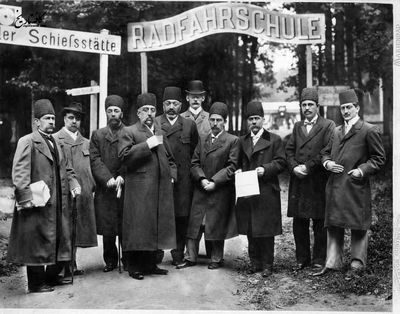The film was uploaded on the palace’s Instagram and website to observe Research Day on the Iranian calendar in memory of Chahryar Adle, the Iranian historian who was a professor emeritus of the French National Centre for Scientific Research, Golestan Palace director Afarin Emami said in a press release on Tuesday.
In their research at the storehouses of the palace in 1982, curators discovered three old footages recorded on 38 reels, she said.
Adle started a study on the films and finally sent the reels to Paris in 2002 to be restored at the National Centre for Cinema and the Moving Image (CNC).
The outcome was the 56-miniute film that is now available on the Instagram and website of the palace.
Scenes of the film, which were shot by Mirza Ebrahim Akkasbashi under the auspices of the Gaumont Film Company in Neuilly-sur-Seine, France, show Mozaffar ad-Din Shah attending a flower festival in Ostend, Belgium on August 18, 1900.
Parts of the film also depict the shah watching acrobatics and royal guards on the march, and traveling on the coach in Tehran streets.
Experts consider this film as marking the advent of cinema in Iran because it is the first film shot by an Iranian.
Adle studied history at the University of Paris, now the Paris Sorbonne University. He also pursued education in the archaeology of the Orient and Islamic art history at the École du Louvre.
He received a Ph.D. in the history of Iran and Central Asia.
He was among the Iranian experts who compiled the necessary information to submit to UNESCO to register Persepolis, the Chogha Zanbil Ziggurat and Naqsh-e Jahan Square on the World Heritage List.
He was also the author of many books, including “Teheran Capitale Bicentenaire”.
Adle also collaborated with Irfan Habib and Karl M. Baipakov in writing “History of Civilization in Central Asia”.
“History of Civilizations of Central Asia VI” was also published by Adle, Anara Tabyshalieva and Mahdavan K. Palat.
On October 5, 2009, Adle was awarded the UNESCO Five Continents Medal in recognition of his outstanding contribution to UNESCO’s General and Regional Histories, a study project in which people in certain regions write their own history.
He died in Paris in June 2015 at the age of 72.

